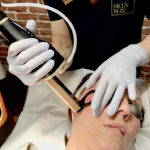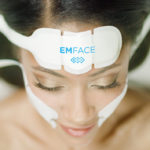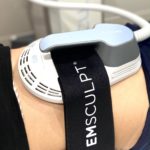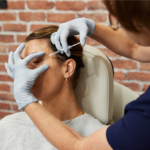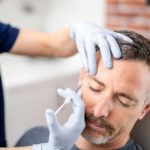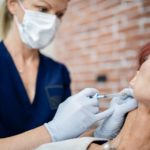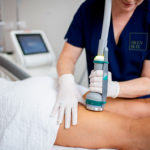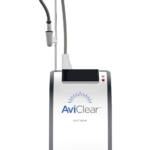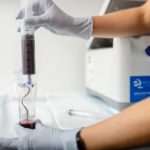Perimenopause and Beyond
This week (2nd-6th Sept) is all about celebrating and supporting the health of women, girls and gender diverse Australians. I thought it would be timely to do a small blog series on the issues that most affect our female patients through their different life stages. By no means an exhaustive list, and leaving out the anxiety/depression and violence issues that are at the forefront of the disease burden for women in Australia right now, this series touches on the presentations we see in clinic during puberty, the reproductive years and then in mature adults.
Perimenopause and Beyond – The Era of Power
We are bombarded on a daily basis by media messages aimed at anti-aging – young is beautiful; old is useless. At Skinbox we believe that aging is a privilege; maturity can also be beautiful and we are at our strongest, wisest and most awesome as we age. We are not looking to stop the ageing process, but to help it progress gracefully and functionally, so that our skin operates at its best and we look and feel the very best versions of ourselves.
The transition from our reproductive years into what I have decide to term my Era of Power can be a rocky one. This peri-menopausal stage, which starts as oestrogen levels begin to wane, can go on for up to a decade before menopause (which is technically a single moment in time – 12 months after your last period). The average age of menopause for Australian women is 51, but it ranges from 45 to 55, with some women experiencing this “early” at age <45, or “prematurely” at age <40. Perimenopausal symptoms generally last for 4-8 years and whilst some women barely notice these, for others they can be seriously debilitating.
The range of symptoms is crazily broad, and many can be attributed to a multitude of other causes, such as being tired, stressed and overworked – making it easy for both patients and clinicians to miss the bigger hormonal picture. If you are wondering what these symptoms are – check out this list and scoring system from the Australian Menopause Society. For women in this age group, it is worth knowing that unfortunately, menopause is not at all well taught in medical schools anywhere around the world and so you may need to advocate big-time for yourself in order to get heard. Complete the scoring card and go armed with it to your GP. If you haven’t already, I recommend you read The New Menopause by Dr. Mary Haver, which is as inspiring as it is educational.
Lifestyle modifications can be key to surviving the perimenopausal years. These go beyond the scope of this little blog post, but it is worth mentioning the value of exercise programs designed specifically for women, dietary changes, reducing/stopping alcohol intake and of course avoiding smoking/drugs. All of these changes can help our bodies cope and adapt more easily to the effects of the hormonal rollercoaster.
If you have read this far, you may be wondering what menopause has to do with SkinBox? Let me explain.
Firstly women over 40 make up our largest patient demographic, and we adore them. Secondly, more than half our staff are in this phase of their lives, so we get it!. And thirdly, many of the symptoms on the perimenopause menu are the exact things that patients come to us seeking solutions for:
- dry skin
- redness & sensitivity
- wrinkles
- loss of skin elasticity
- volume-loss from the face
- suddenly appearing 10yrs older in the space of 12 months
- increase in size around the abdomen
- new onset of teeth grinding
- sprouting of facial hair
- dryness of the vagina & painful sex
- lack of libido
- urinary incontinence
Many of these women are on a journey of self-discovery, moving from an era where perhaps they have concentrated on caring for a young family, building a career, or gaining financial/housing stability, into a new phase where they have the time and power to focus on their own well-being. It is immensely fulfilling to join our patients on this journey, and many have now been with us at SkinBox for over a decade.
SKIN
As women enter the perimenopausal phase and oestrogen levels start to decline, we quite rapidly can see characteristic skin changes in the form of epidermal thinning, declining dermal collagen content, diminished skin moisture, increased laxity, and impaired wound healing1. The role of oestrogen in the skin is to regulate fibroblasts, which are the cells that make collagen, as well as controlling the amount of oil produced by sebocytes, leading to moisture retention. Oestrogen also raises the levels of mucopolysaccharides and hyaluronic acids in the dermis to maintain hydration and improve the barrier function of the stratum corneum2. The amount of collagen in the skin correlates with oestrogen levels, with up to 30% of dermal collagen being lost in the first 5 years after menopause, and subsequently decreasing by approximately 2.1% per year3. Collagen content in the dermis is the major contributor to overall skin thickness, and this overall thickness has been shown to decrease by 1.1% per year post menopause. Supplementation of oestrogen, either systemically with Menopause Hormone Therapy, or topically directly onto the skin of women with oestrogen deficiency has been shown to increase collagen synthesis4.
Whilst there are currently no commercially available oestrogen creams specifically for the face/neck in Australia, we commonly custom-make a “menopause” serum containing isoflavones. These are soy-derived compounds that mimic the effects of oestrogen on the skin, and whilst not as effective as oestrogen itself, they have been shown to significantly increase collagen and hyaluronic acid production when applied directly to the skin4. Custom designing skincare allows us to include other cosmeceutical ingredients, depending upon your skin’s needs, to also address concerns such as pigmentation. Each serum lasts about 2 months so your personal recipe can be regularly adjusted as skin health improves.
Women in this age group very often have dehydrated skin due to the decline in oestrogen, which reduces the skin’s ability to act as a barrier, increasing trans-epidermal water loss and allowing environmental factors to be more irritating. Imagine your skin as a brick wall, where the cement holding the bricks together has started to dry out – the structural integrity of the wall is compromised, it leaks a bit, weeds get into the cracks and cause further damage to the cement. Skin with an impaired barrier is often dry and red. Patients typically report that they can’t use any skincare products as everything they have tried makes it worse. If you think this might be you – consider what your face feels like just after you have washed it: that tight, stretched sensation that you associate with “squeaky-clean”? That sensation is not cleanliness; it is dehydration. A well hydrated skin with a good barrier function does not feel tight after it’s been cleansed. Repairing the barrier is therefore often the first step, before we can look at changing cell function with topical actives, and this can start with as simple a step as changing your cleanser. To what? – that depends on your individual skin. Now that you are wise and mature, there is no more important time in life to get correct skincare advice from a qualified professional rather than from an influencer on social media. Check in with a Dermal Therapist for a skincare assessment.
In addition to a good home skincare routine, hydration and cell function can be further improved with regular medical-grade facials, such as the Hydrafacial®, which year after year continues to be the most popular treatment we offer at SkinBox and is available as a variety of different Memberships. Photoaging (brown spots) can be treated with IPL or laser resurfacing, and rosacea – a chronic multifactorial skin condition what often presents in the 40s/50s – can be very well managed with a combination of skincare, lifestyle modifications, medication and injectables.
WRINKLES & VOLUME
Dynamic wrinkles can be lessened and any imbalance in facial muscle activity can be addressed with injectables and/or muscle stimulation. Volume changes caused by reduction in bony support and descent of deep fat pats can be tweaked, so that we continue to look like ourselves rather than our granddads. But we can’t put the lips of a 20yr old on a face that is 50, so please don’t ask!
REGENERATION
The past few years have seen an upward trend in patients seeking a regenerative approach to their ageing journey. Cell-based therapies such as Emcyte®, which can be used alone or coupled with gentle microneedling or more impactful laser therapy, promote a true rejuvenation of skin cells. Polynucleotides are also taking Australia by storm right now. These bio-identical little building blocks are injected into the skin, where they enter your body’s natural recycling system, promoting collagenesis, reducing inflammation and improving structural integrity. The Alma Hybrid laser is the powerhouse of devices in our clinic. The unique blend of 2 different laser wavelength provides a customisable resurfacing experience in terms of both downtime and results.
This regenerative trend is leading the team at SkinBox in an exciting direction towards longevity medicine, where we shall be delving into other techniques & modalities that can be used to increase our “health-span” – the period of life where we are healthy and functioning optimally. We shall be exploring the evidence-based aspects of “body-hacking”, and looking at how we can measure and monitor elements such as body composition and glucose responses. If you would like to be first in the know as we roll out our longevity and menopause-management services, fill out your details below to join our waitlist.
BODY SHAPE & VISCERAL FAT
One aspect of ageing that we known can impact our health-span, and which for many healthy women tends to first be noticeable in the perimenopausal years, is an increase in visceral fat. Not only does superficial fat increase for a lot of women in their 40s & beyond, the fat that lies around our internal organs also increases, thickening our waists and raising the risk of cardiovascular and other chronic disease. As a double whammy, whilst our fat percentage is increasing, our muscle mass decreases (medically referred to as sarcopenia).
Once lifestyle modifications have been optimised there can be a role for menopause hormone therapy, geroprotective supplements*/medications and devices such as HIFEM systems – zero-downtime treatments that have been clinically proven to reduce visceral fat5. Whilst body sculpting devices should not be seen as a weight-loss solution, they can be very useful as an additional aid to improving cellulite (purely for mental well-being, it doesn’t actually matter at all physically if our thighs are a bit dimply), and also for increasing muscle mass, thereby fighting the sarcopenia that occurs with the decline in oestrogen levels, having a knock-on effect on metabolism as well as strength and function.
VAGINAL DRYNESS
Another part of the hormonal transition story for women in the 40s and beyond is what happens to our vagina and labial area. The Genito-Urinary Syndrome of Menopause is not talked about nearly enough, despite being experienced by more than 50% of women. At least half of us at some point will suffer from dryness, splitting/bleeding, urinary frequency & burning, as well as pain that can range from mild discomfort to agony with intercourse. A variety of hormonal and non-hormonal treatment options are available to tackle this varying constellation of symptoms, so please don’t suffer in silence!
Whether your perimenopausal journey is smooth sailing, a wild storm or a rocky marathon, there are multiple aspects that can be tweaked and optimised, with avenues to explore that can impact skin function, facial appearance, genitourinary health, hormonal balance and body composition. And all these things stay relevant in the years beyond menopause, which actually make up more than half our lives! So I encourage you to stop feeling negative about ageing. Let’s be proactive; live the best and healthiest versions of ourselves and celebrate the positive aspects of maturing.
Dr. Sarah Boxley – MBBS BSc(Hons) MSc FRACGP FSCCA FACAM FCPCA
(*always consult a medical professional and take as directed)
